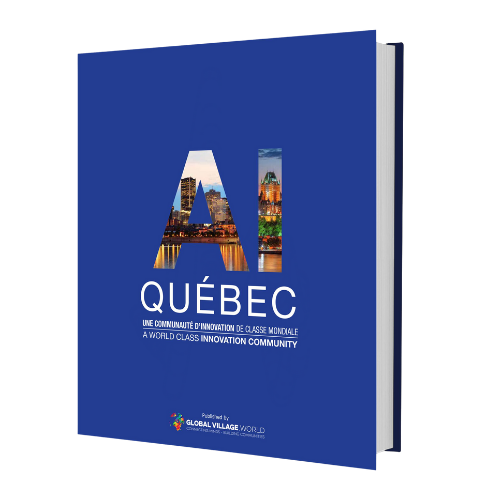The Centre hospitalier de l’Université de Montréal (CHUM) is developing and changing to adapt to constant change in its internal and external environment. The changing needs and demands of the public, the advances in knowledge and technologies, and the integration of artificial intelligence (AI) into health care have triggered these continuing changes. Striving to adapt to these changes has made the CHUM an innovative organization. The CHUM has tapped into individual and collective creativity and intelligence, augmented by artificial intelligence, to meet these changes. It has also introduced an agile organization model and an open innovation ecosystem to create and maintain an environment favorable to innovation.
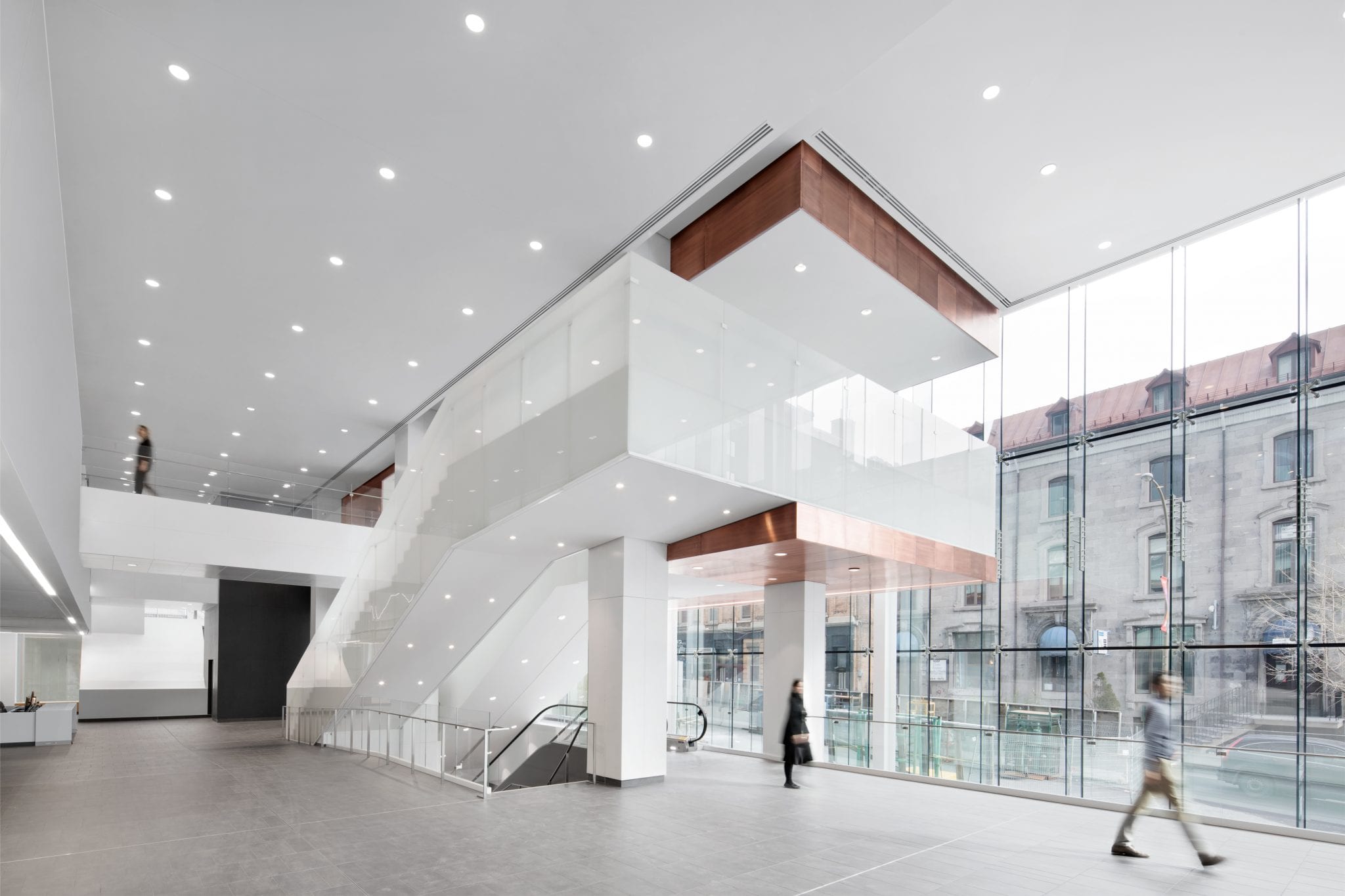

What sets the CHUM apart
Rethinking the hospital of the future is the focus of discussion and the exciting adventure of the new Centre hospitalier de l’Université de Montréal (CHUM), which brought the teams of its three founding hospitals together under one roof in the fall of 2017. It is also the beginning of a major health care and social project. This project has changed a lot over the last two decades and is still being defined today.
The CHUM hospital complex is located in the heart of downtown Montreal where it occupies a full city block, in addition to being connected to a logistics building via a walkway and tunnels, and to a Metro station. A university hospital affiliated with the Université de Montréal, the CHUM provides specialty and subspecialty health care to the adult population of the province of Quebec. Its mission comprises five dimensions: health care, teaching, research, health promotion and the evaluation of technologies and intervention methods.
A complex that’s both vast and welcoming
The CHUM’s architecture acts as a bridge between the past and the future: two distinctive heritage features, namely, the steeple of the Holy Trinity Church (1865) and the Garth House (1871), were dismantled and rebuilt, stone by stone. These features, as well as the views of the city, provide visual cues that help patients, visitors, and staff find their way through the hospital complex.
The CHUM has the largest collection of works of art, implemented under the Politique d’intégration des arts à l’architecture du Québec: eventually, the public will be able to discover 13 works of art created by artists mindful of the CHUM’s mission. A final phase will house other outpatient clinics, offices, parking facilities, a library, and an amphitheater.
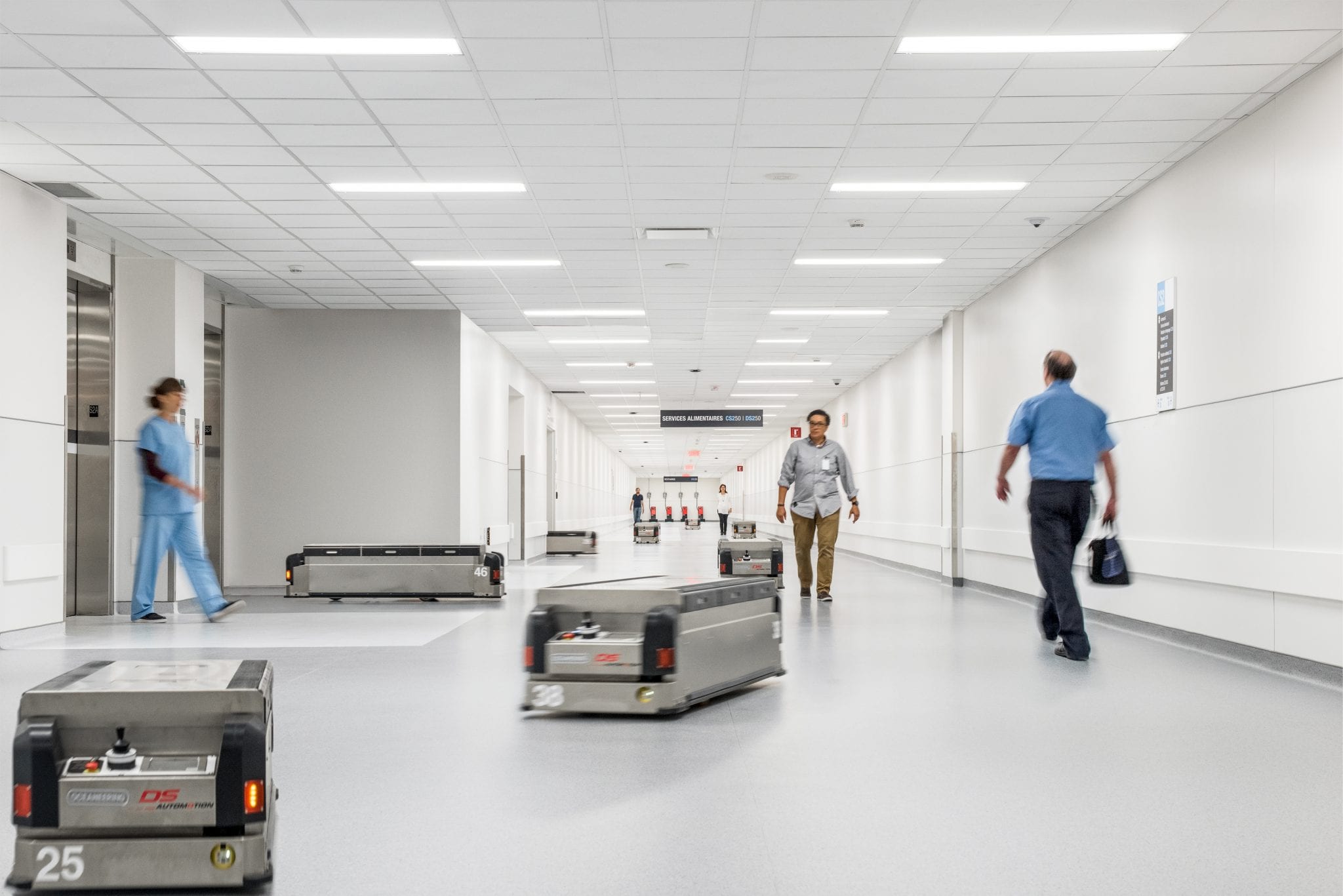
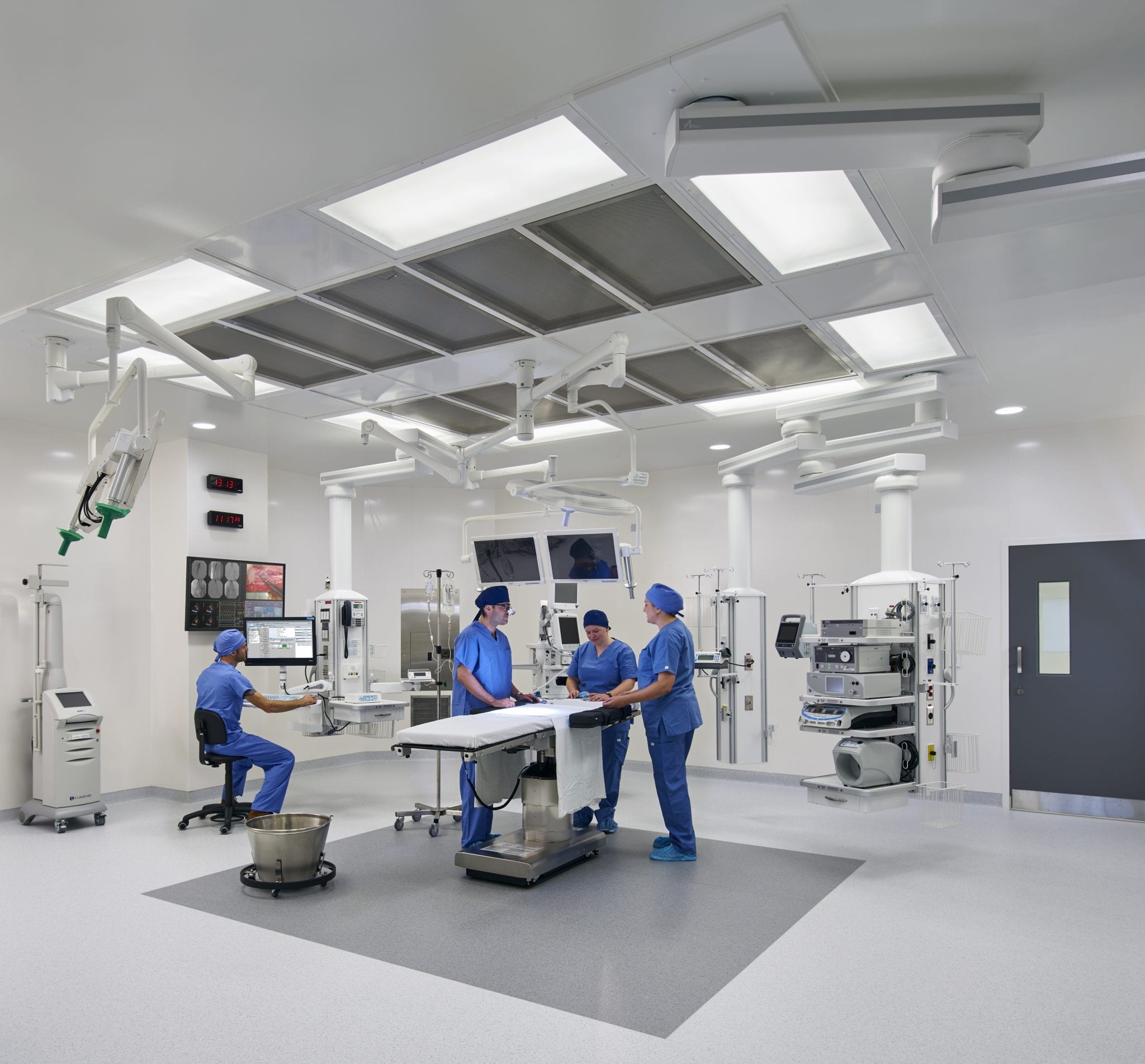
Innovation to better understand needs and humanize the patient’s hospital experience and their lifelong health care trajectory
- Research projects are underway to better understand the mechanisms and factors that promote innovative learning health systems and organizations, to better meet the needs of the public and health care staff.
- In outpatient clinics, patients register at one of the terminals by scanning their health insurance cards and taking a ticket that informs them of the procedure to follow. A volunteer is always present to assist and reassure patients.
- In the emergency department, patients complete a form to facilitate the initial analysis of their condition before seeing the doctor. Connected to artificial intelligence software, questions appear based on the patient’s previous answers and the form is then used to initiate the conversation between the patients and their doctor.
In both cases, the goal is to optimize the patient’s hospital experience and to eliminate administrative steps in favour of health care and human dialogue.
- In the longer term, a digital platform will focus on the interactions between the patients and their family members, health care team and community, and will document their medical and non-medical health care needs in real-life settings. The Hôpital et Réseau Apprenant, Communicant, Enseignant (HoRACE) will make it possible to better coordinate, transform and personalize the health care system.
Innovation to provide a better environment
- 70 automatic guided vehicles make 3,500 trips every day, transporting medication, meal trays, supplies, instruments, equipment, linen and waste and recycling material. The staff, no longer required to carry out such logistics-related tasks, has more time to devote to patient care.
- More than 40 air handling units continuously supply fresh air throughout the hospital, creating a controlled environment suited to a patient-care context.
- All the CHUM’s electric circuits are redundant to avoid a power outage or service interruption, thus ensuring the continuity of clinical services.
- The CHUM’s building management system features 125,000 data points. Collecting and analyzing these billions of pieces of data will allow it to continue to improve the performance of the smart buildings that support the clinical activities.
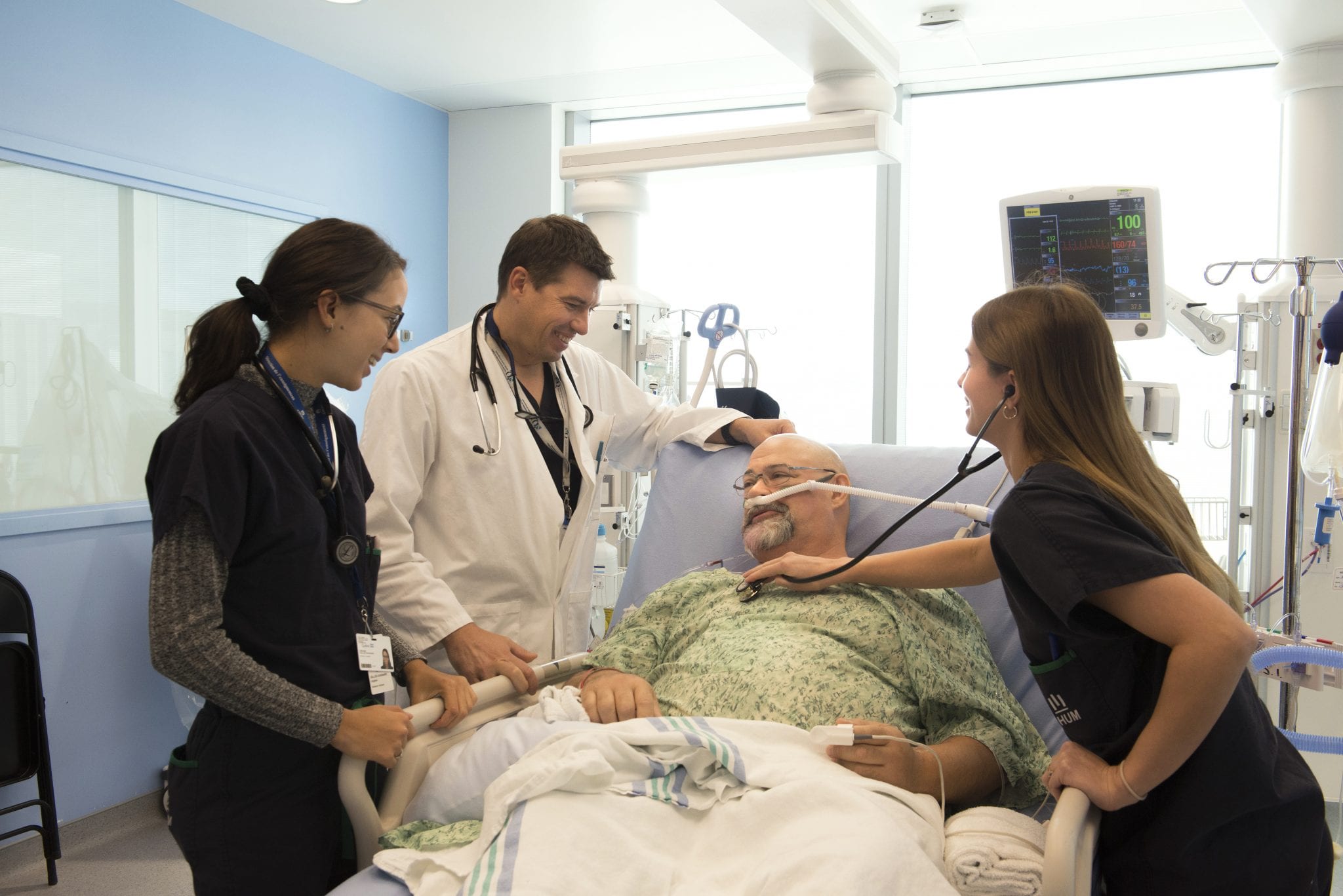
Innovation to better meet needs (preventing, healing, treating) by tapping into the individual, collective and augmented creativity of its ecosystem
The CHUM is working on many projects that use human creativity and intelligence, and intelligence augmented by artificial intelligence or new technologies with a view to mastering them and implementing them appropriately in clinical practice, with the help of patients.
- A research project aims to better diagnose depression by using smartwatches. This digital phenotyping would allow patients to avoid relapses through ongoing monitoring.
- Another research project uses artificial intelligence to predict epileptic seizures similar to the way we predict the weather, with an eye to preventing seizures and to one day having the ability to treat them locally as well.
- At the Major Burns Unit, patients were able to avoid amputation or complications thanks to the leadership and ingenuity of the nurses. The latter used and combined negative pressure therapy techniques for new medical conditions. They even influenced the industry partner’s technology. The CHUM may become a referral centre in this field in Canada.
- The CHUM’s Centre d’intégration et d’analyse des données (CITADEL) builds and manages the CHUM’s vast patient data warehouse in order to contribute to the advancement of knowledge and research and to generate innovative projects to improve the health and well-being of the people of Quebec and worldwide.
- The CHUM has also implemented the VIA CHUM project, which provides strategic support to companies wanting to validate their technological innovations in real clinical settings in the CHUM’s living laboratories.
- To sustain this ecosystem, the teams at the CHUM and throughout the entire network share and discuss their current leading-edge projects during Innove-Action, a key innovation event hosted annually by the CHUM. Several other events throughout the year sustain the CHUM’s innovation ecosystem.
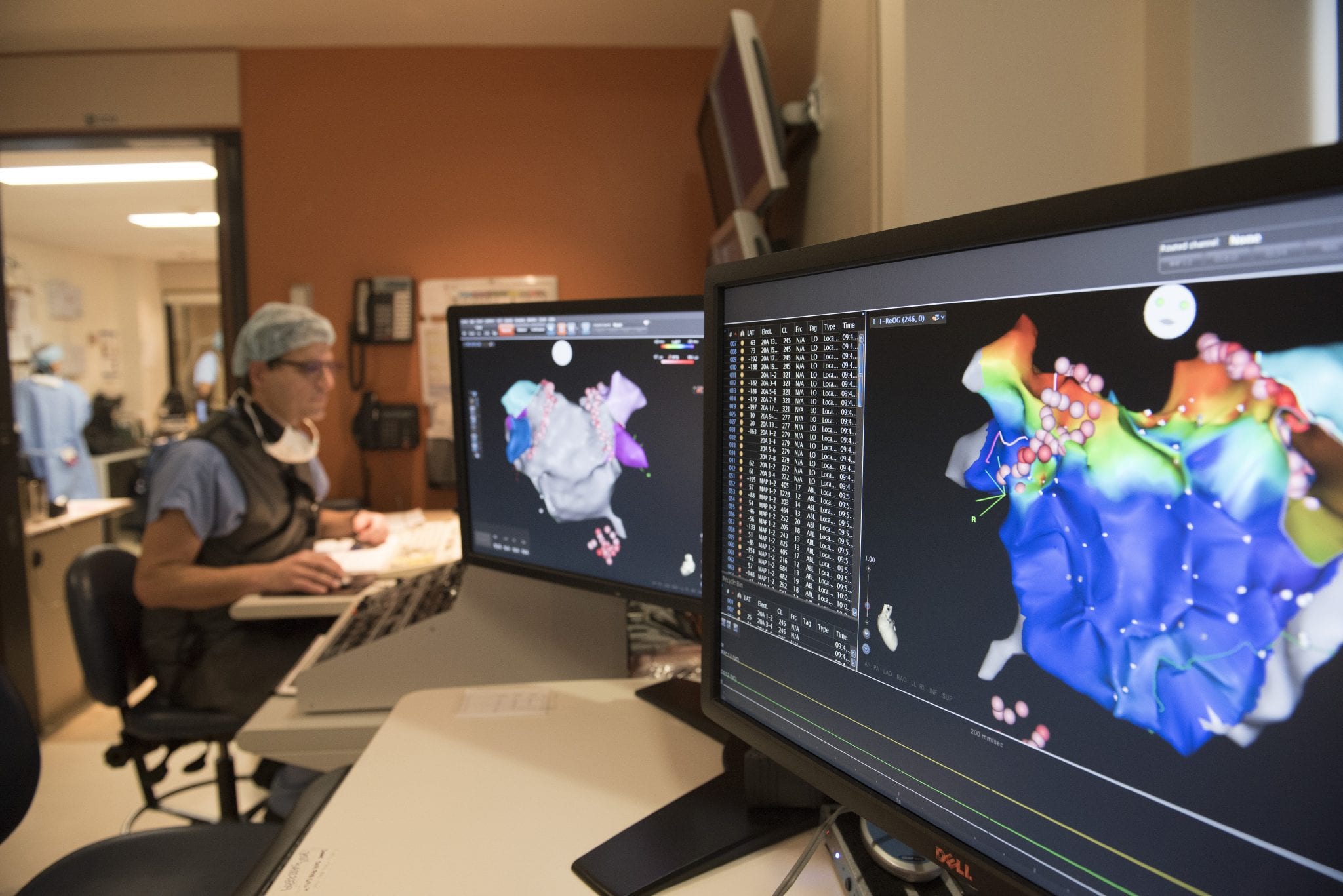
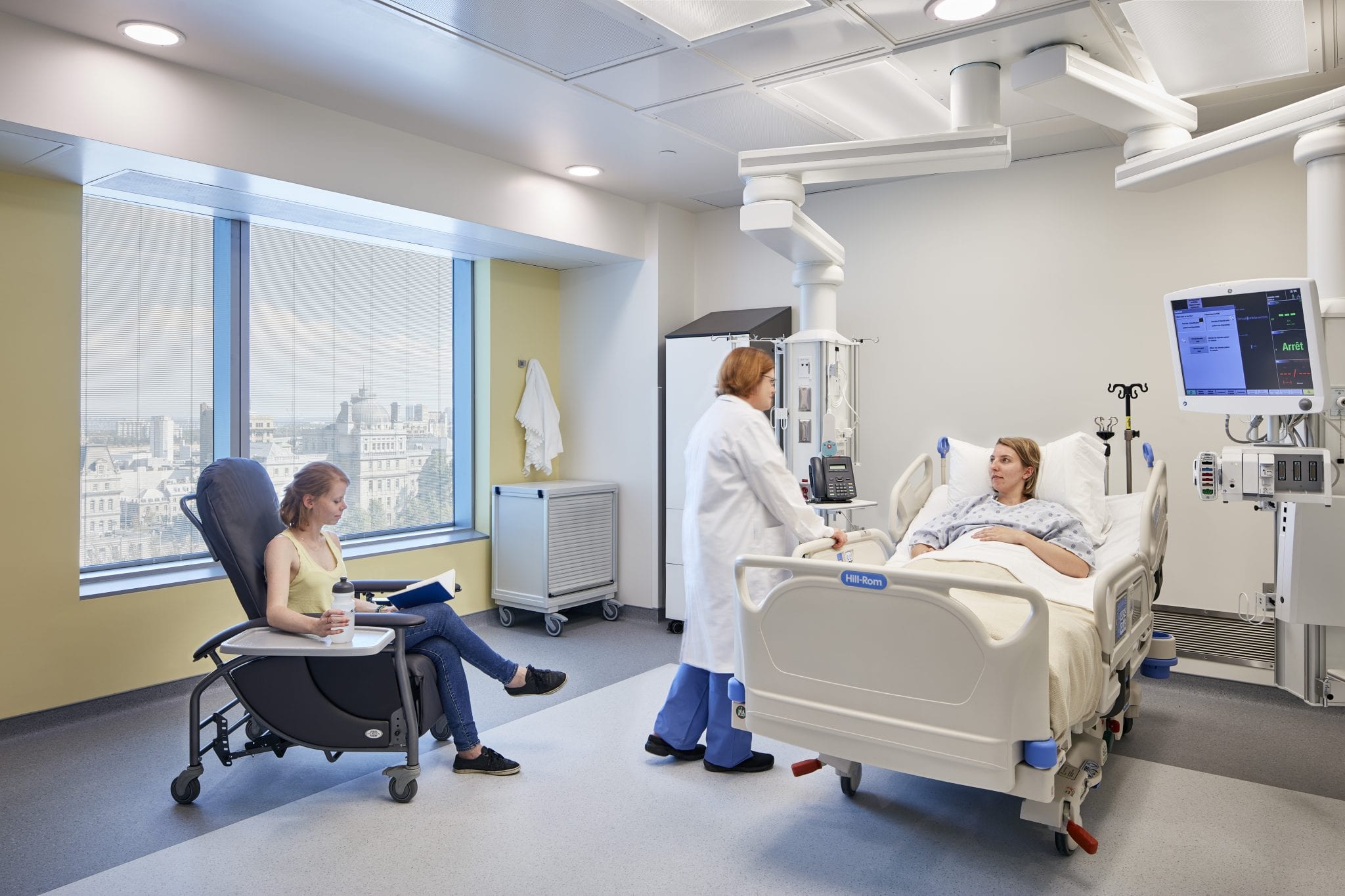
Innovation in research, its lifeblood
The CHUM Research Centre (CRCHUM) opened in 2013, representing the first phase of the new hospital complex. The CRCHUM is the only hospital-based institution in Quebec to cover the entire research spectrum: basic, clinical and population health research.
Its research themes are the following: cancer, cardiometabolic diseases, immunopathology, neuroscience, imaging and engineering, and the Health Innovation and Evaluation Hub.
All new management tools, treatments, devices or drugs used in the hospital are the result of research work. Research is the very foundation of innovation – it is a key element in applying any discovery intended to prevent, diagnose or treat diseases.
Innovation by the School of Artificial Intelligence in Health, a global leader
The CHUM founded the world’s first School of Artificial Intelligence in Health (SAIH). The SAIH’s focus is on the development of human capabilities and the real-world implementation of AI. The school allows its community to develop, to apply AI to the field of health, to measure its impacts for patients, teams and the health care system, and to disseminate knowledge and skills worldwide.
The SAIH deals with important themes such as the social acceptance of AI in health care, transformations to occupations, professions, practices, and teams, as well as the organization of the health care network. This school offers a variety of courses, training sessions, and learning activities to many audiences, including patients and citizens. To date, the SAIH is the result of a partnership between the CHUM, Université de Montréal and HEC Montréal
Innovation with the help of the Fondation du CHUM
The mission of the Foundation du CHUM is to provide the institution visibility and an additional source of funding. For 20 years, the Foundation du CHUM has been a catalyst and a true driving force behind the innovations accomplished by the CHUM through its many initiatives. The Foundation itself innovated recently by setting up interactive donation terminals, a first in North America. This new way of making a donation exploits the simplicity of contactless payment, using a card or a cell phone while providing a solution to visitors’ spontaneous desire to give to the CHUM.

